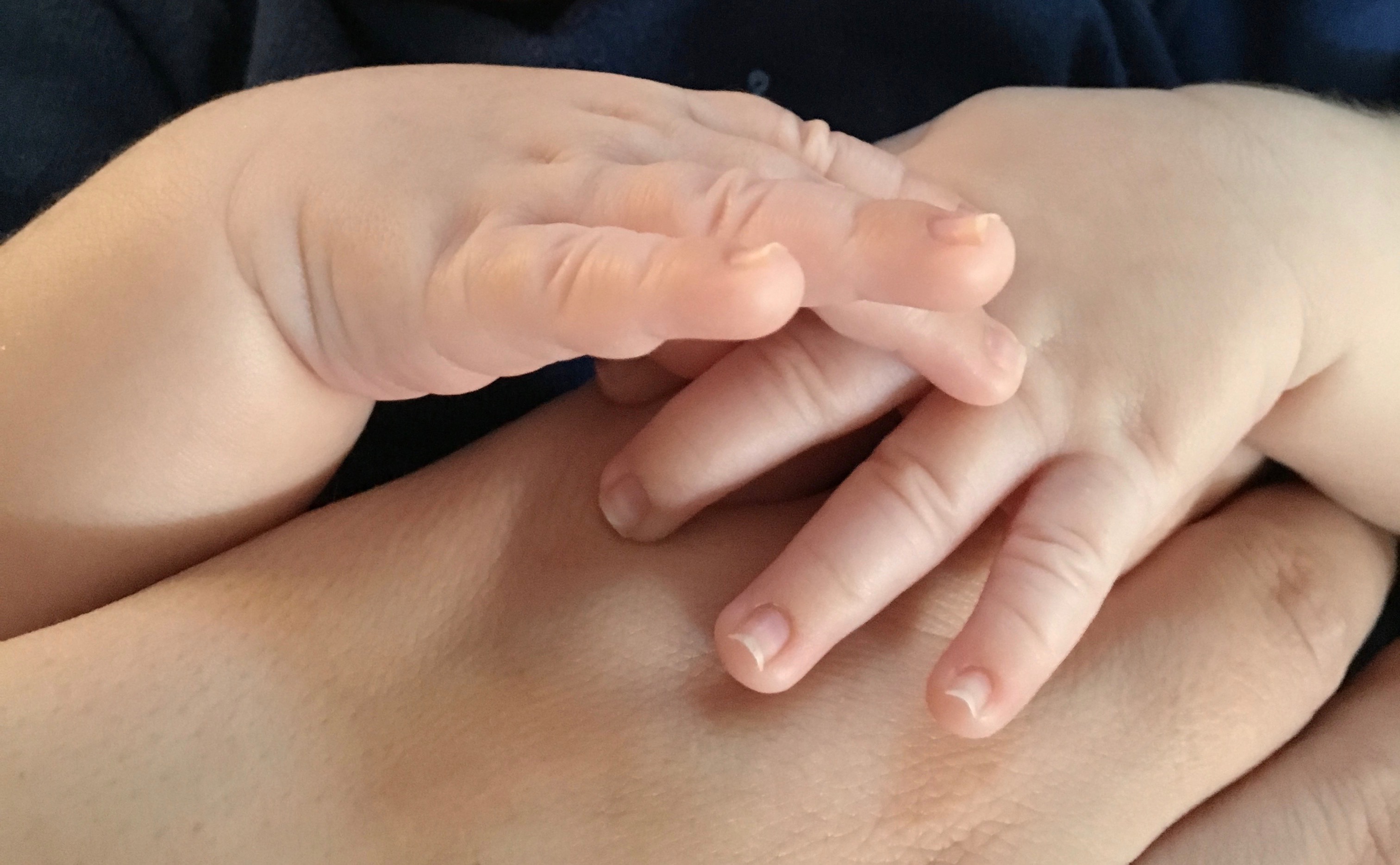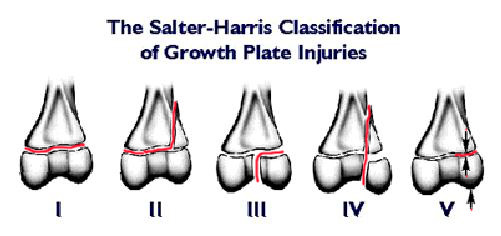When we are young (or "skeletally immature"), our bones grow from areas called "growth plates," or "physes" (FEYE-sees). Below is an X-ray of a wrist in a young person. The thumb would be above the image and to the right.

(Above annotated image courtesy of Dr. David Nelson, www.davidnelson.md)
The epiphysis is the end of the bone, capped by the cartilage that helps your joint move. The physis is the growth plate, the part of the bone that has the cells that allows the bone to grow longer. The metaphysis is the broad region of bone next to the physis, and the diaphysis is the long narrow center part of the bone (most of which is not visible in this X-ray).
Growth plate injuries occur in children, up until about age 16 for young ladies and 18 for young men. This is the weakest area of the growing bone and is weaker than the ligaments of the adjacent joint. In a growing child, a serious injury to a joint is more likely to damage a growth plate than the ligaments that stabilize the joint. Interestingly, each age bracket has a different response to a similar injury of falling on the outstretched arm: when younger children fracture (break) the bone, it actually bends! We call these "greenstick fractures" or "buckle fractures." Older children get growth plate injuries, young adults often fracture into the joint, and elderly people usually fracture through the metaphysis. An injury that might cause a sprain in an adult may cause a growth plate injury in a child.
Growth plate injuries actually are breaks (same as fractures). They occur twice as often in boys as in girls, with the greatest incidence among 14- to 16-year-old boys and 11- to 13-year-old girls. Older girls experience these fractures less often because their growth plates stop growing and change into solid bone at an earlier age than boys.
If your child has an injury that causes significant pain, visible deformity, or decreased ability to continue activities, he or she should be evaluated by a doctor.
The fractures of the growth plate are classified according to the system of Drs. Salter and Harris. This diagram is courtesy of Dr. David Nelson via the NIH website, permitted to use an image from Disorders and Injuries of the Musculoskeletal System, 3rd Edition. Robert B. Salter, Baltimore, Williams and Wilkins, 1999.

The main concern about growth plate injuries is that the growing cells can be injured by the fall. They also can be injured by the doctor, when he or she is trying to help correct the problem by straightening out the broken bone, which is why we try to do it very, very gently. Almost all of growth plate injuries of the forearm heal without any problem (the main problem occurs in knee and hip growth plate injuries, which fact you should bear in mind when you are reading generalized statistics about growth plate injuries). The challenge is that we cannot see the growing cells on the xray and we cannot tell if they are injured enough to stop growing or not. The only way to tell is to treat the fracture gently and watch how the bone grows.
The incidence of growth plate closure (what happens if the growing cells are injured enough to stop growing) is very rare, less than 1 in 500. If, however, the growth plate is injured enough and it closes, the bone does not grow properly. It can stop growing entirely, which may not be a problem in an older child. It can stop growing only on one side, which in children with a large amount of growth left can cause the bone to grow crooked. These problems are even more rare than growth plate injuries (that is, most growth plate injuries heal without any problems), and usually is not even noticed by the patient.
In general, we like to straighten out (reduce) fractures, which includes growth plate injuries. We straighten them out (reduce them) as gently as possible, and try not to do repeat reductions. The mild deformity left after a growth plate fracture almost always remodels and growth plate injuries resulting in closure are rare. If your child has sustained a growth plate injury, we will discuss it when you are in the office and will take xrays over time (sometimes over a period of a year) to see how the bone is doing. Remember, growth plate injuries that do not heal properly are rare.